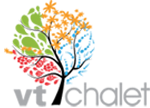After cleaning, drying and oilingbear intestines, a hollowed quill would be attached as a teat, allowing concoctions of pounded nuts, meat and water to be suckled by infants for nutrition. Known side effects include headache, upset stomach, dizziness, and allergic reactions. Chanting, singing, painting bodies, dancing, exorcisms, sand paintings, and even the use of mind-altering substances are all possible in these ceremonies. For some, there is a lot of information, while there may be just a little for others. Native Americans were also victims of a variety of diseases that Europeans did not develop. The Role of Native American Healing Traditions Within Allopathic Medicine Goldenseal (Hydrastis canadensis L.) Gravelroot/Joe Pye Weed (Eupatorium purpureum) Hawthorn (Crataegus spp.) There are many different Native American rituals for healing. Maiden's Acacia. Horticulturist Blake Burger and horticulture intern Kenna Castleberry pick their top 10 to grow at home. Miraj S, Alesaeidi S. A systematic review study of therapeutic effects of Matricaria recuitta chamomile (chamomile). Accessed February 15, 2014. In spring, when the temperatures of the day are above freezing and the nights still wrapped in winters cold, the birch sap will begin to flow. The roots can be dried and carried in your survival medical kit. Native American Herbalist's Bible - 12 Books in 1: The #1 Guide with 400+ Herbal Medicines & Plant Remedies. Native Americans have had a significant impact on Western medicine through their innovations in health and medicine. 31 Long Forgotten Native American Medicinal Cure - barefootdesign Birch tar is often used as an ingredient of ointments for psoriasis and eczema. In actuality, these are the doctors. Today, these medicines still represent an important part of healthcare in some countries. Echinacea has traditionally been used as a remedy for toothache, bowel pain, snake bites, seizures, skin irritation, arthritis, and cancer. http://www.sacredearth.com/ethnobotany/plantprofiles/birch.php. 2019;11(12):e6466. It is commonly used for its antioxidant, antimicrobial, antidepressant, anti-inflammatory, antidiabetic, and antidiarrheal effects. But something with a similar purpose existed in indigenous cultures long before. Sacred Earth Web site. Dehelean CA, Soica C, Ledeti I, et al. This essay will look at each approach and its strengths and weaknesses, as well as discuss the difficulties of doing history in an era when history is obscured by time, perspectives, and available evidence. Native American Medicine - WholeHealth Chicago For example, shiitake mushrooms are known to increase T cells, natural-killer T-cells, and anti-inflammatory cytokines levels. Aloe is a top native American medicine. Research shows that regular consumption of cooked or raw garlic may reduce the risk of colorectal cancer. As part of this effort, the National Institutes of Health made a commitment to improve biomedical research procedures to benefit tribes. 4. The article reviews the spiritual traditions of Native Americans and discusses how Christians and Native Americans have become acquainted. This herbs dried, pitted, dried, and crushed berries could be used to treat coughs, colds, flu, nausea, inflammation, and diarrhea. In Germany, a tea of the birch leaves was used to cleanse the blood, muscles, and joints a non-irritant diuretic that removes waste products without inflaming the kidneys (wood). Turmeric is also proven effective at reducing joint pain caused by arthritis. Medicine men and shamans were celebrated as part of the culture. Native to parts of Europe and Asia, Yarrow was naturalized in North America and extensively used by Native Americans for their medicinal properties.
Restaurants With Live Music Orange County,
Holmes On Homes Cast Member Dies,
Toledo Edison Payment,
Wear Felicity Shipping Time,
Articles W
